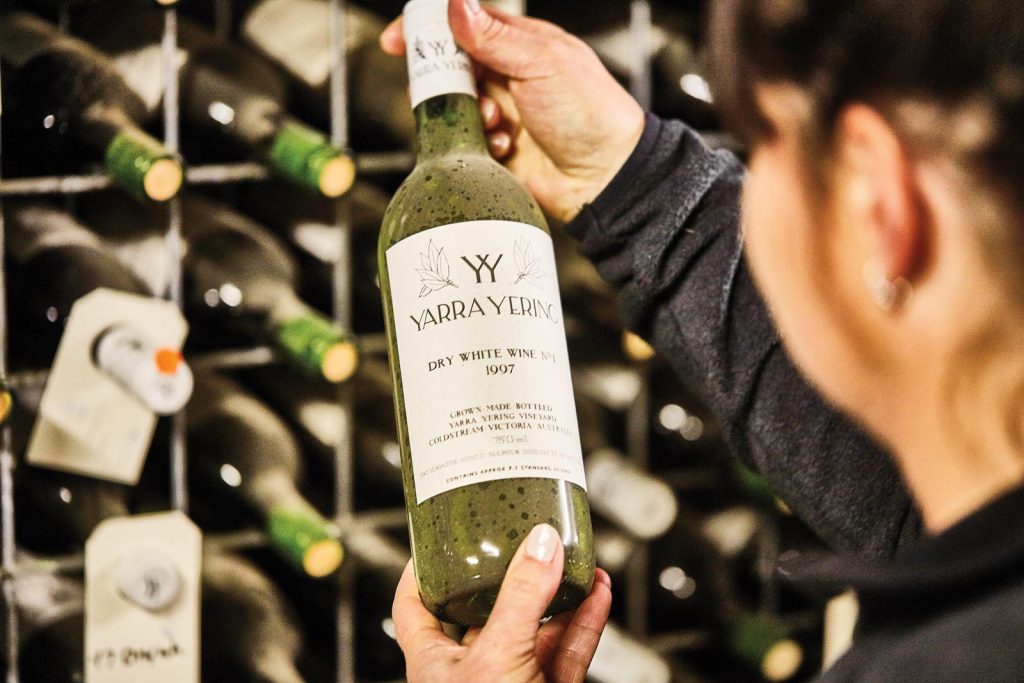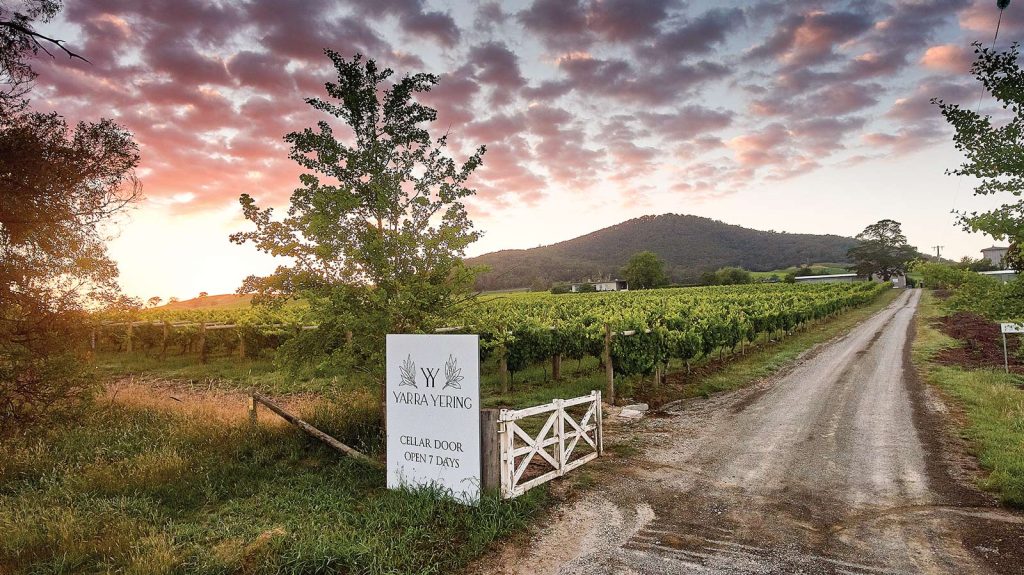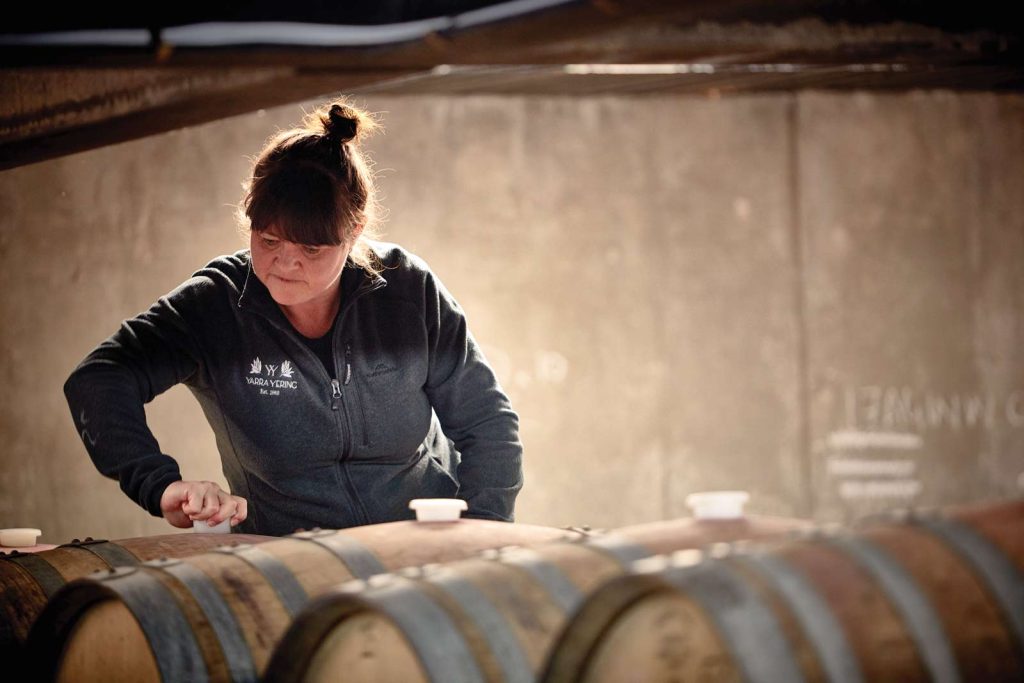
Yarra Yering: Pioneers in tradition
The Yarra Valley experienced a rebirth at the end of the 1960s, with several wineries establishing themselves in a region that had laid dormant since the early ‘20s. Harrison Davies spoke with Yarra Yering winemaker and general manager Sarah Crowe about the winery’s audacious start in the region, where it is today, and what is next.
In 1973, Yarra Yering produced its first vintage. This was not only a milestone for the young winery, but also for the region which hadn’t bore witness to any production for over 50 years.
Founding producers at Yarra Yering, Dr Bailey Carrodus and Reg Egan, focused on highlighting the signature styles of the cold climate found in the Yarra Valley and debuted their first vintage with wines that are still their flagships – Dry Red no.1 and Dry Red No.2.
The winery then expanded in 1990, when they purchased the neighbouring property to expand their range and plant more vines. It is now home to 70 acres of vines that produce between 1-2 tonnes per acre.
The vines are all grown without the aid of irrigation which leads to low yield, high flavour wines that highlight bold flavours and natural acidity.
Winemaker Sarah Crowe said the red blends are still what the winery is known for, but that they had expanded their repertoire since the early days.
“The two flagship wines are the Dry Red Wine No. 1, a Cabernet dominant blend, and Dry Red Wine No. 2, a Shiraz dominant blend, which were the first commercial wines made in 1973,”
she said.
“Smaller amounts of Chardonnay and Pinot Noir were also planted in 1969 and today the vineyard is planted to Viognier, Merlot, Malbec, Petit Verdot, Marsanne, Mataro, as well as small plantings of six Iberian varietals including Touriga Nacional, Tinta Cão and Tinta Roriz.
“Cabernet and Shiraz remain the highest production.”
The wines have been more ‘traditionally Yarra’, reflecting the cooler seasons, longer hang time on the vine resulting in very good wines: fragrant and bright fruit characters with good natural acidity.
Sarah Crowe

The last few years have brought more rain to the region and, with La Niña, they have also come at a different time which has changed vintage calendar.
Crowe explored how the landscape inspired their winemaking and how the region can accommodate a wide variety of styles.
“Traditionally rain falls in winter and spring but it has been pushing into late spring and summer,” said Crowe.
“Rapid growth and sodden soils making it difficult to get on with the tractors to protect the new growth. On the bright side, this has meant less heat stress in the vines, good canopy growth since we are a dry grown vineyard.
“The wines have been more ‘traditionally Yarra’, reflecting the cooler seasons, longer hang time on the vine resulting in very good wines: fragrant and bright fruit characters with good natural acidity.”
Like many other Victoria producers, Yarra Yering have had to work around strict COVID measures and lockdowns within the state over the past year.
At the time of writing, restrictions have only just been lifted and, like many other producers across the country, the challenge is finding staff to help take on the next season’s vintage and to accommodate guests in the cellar door.
“Being classed as Metro Melbourne; we have been in one of the longest periods globally of lockdown which has meant no visitors,” said Crowe.

Being classed as Metro Melbourne; we have been in one of the longest periods globally of lockdown which has meant no visitors
Sarah Crowe
The region was also hit with Phylloxera in 2006, proving a costly challenge. Yarra Yering have proven themselves leaders in fighting this challenge and hope their solution will be their legacy.
“This was initially devastating for the region and costly to address, we are now looking at it as an opportunity to adapt to now and the future,” she continued.
“This is our opportunity to make changes to our varietal and clonal mix, utilise rootstock to our advantage, adjust row orientation and update inadequate trellis systems. This will be our legacy to the next generation of Yarra Valley winemakers.
“It’s an exciting place to be making wine, I think as a region we challenge each other aspire to craft better wines each year by sharing knowledge and working together.”
Yarra Yering helped to rekindle a winemaking spark in the Yarra Valley and continue to be forward thinking, innovative producers in the region.
This post was originally featured in the December 2021 issue of the Grapegrower & Winemaker.
To read more articles like this, subscribe online here.